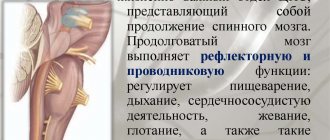What lies behind this diagnosis, who has the right to make it, and what do parents need to know?
What is mental retardation, or mental retardation - classification of retardation
The first thing that moms and dads need to understand is that mental retardation is not an irreversible mental underdevelopment and has nothing to do with mental retardation and other terrible diagnoses.
ZPR (and ZPRR) is just a slowdown in the pace of development, usually detected before school . With a competent approach to solving the problem of ZPR, it simply ceases to be a problem (and in a very short time).
It is also important to note that, unfortunately, today such a diagnosis can be made out of the blue, based only on minimal information and the child’s lack of desire to communicate with specialists.
But the topic of unprofessionalism is not at all in this article. Here we are talking about the fact that the diagnosis of mental retardation is a reason for parents to think and pay more attention to their child, listen to the advice of specialists, and direct their energy in the right direction.
How are mental development disorders classified - the main groups of mental development?
This classification, which is based on etiopathogenetic systematics, was developed in the 80s by K.S. Lebedinskaya.
- ZPR of constitutional origin. Signs: frailty and growth below average, preservation of childish facial features even at school age, instability and severity of expressions of emotions, delay in the development of the emotional sphere, infantilism manifested in all areas. Often, among the causes of this type of mental retardation, a hereditary factor is identified, and quite often this group includes twins whose mothers encountered pathologies during pregnancy. For children with this diagnosis, it is usually recommended to attend a special school.
- ZPR of somatogenic origin. The list of causes includes severe somatic illnesses that were suffered in early childhood. For example, asthma, problems with the respiratory or cardiovascular system, etc. Children in this group of mental retardation disorders are fearful and unconfident, and are often deprived of communication with peers due to the intrusive guardianship of parents, who for some reason decided that communication is difficult for children. For this type of mental retardation, treatment in special sanatoriums is recommended, and the form of training depends on each specific case.
- ZPR of psychogenic origin. A rather rare type of ZPR, however, as is the case with the previous type. For these two forms of mental retardation to occur, severely unfavorable conditions of a somatic or microsocial nature must be created. The main reason is the unfavorable conditions of parental upbringing, which caused certain disturbances in the process of forming the personality of a little person. For example, overprotection or neglect. In the absence of problems with the central nervous system, children from this group of mental retardation quickly overcome the difference in development with other children in a regular school. It is important to distinguish this type of mental retardation from pedagogical neglect.
- ZPR of cerebral-organic origin . The most numerous (according to statistics - up to 90% of all cases of mental retardation) group of mental retardation. And also the most severe and easily diagnosed. Key reasons: birth injuries, central nervous system diseases, intoxication, asphyxia and other situations that arose during pregnancy or directly during childbirth. Among the signs, one can single out bright and clearly observable symptoms of emotional-volitional immaturity and organic failure of the nervous system.
Mental development delays in children and principles of their correction (review)
The mental development of a child is a complex, genetically determined process of sequential maturation of higher mental functions, realized under the influence of various environmental factors. The main mental functions include: gnosis (recognition, perception), praxis (purposeful actions), speech, memory, reading, writing, counting, attention, thinking (analytical and synthetic activity, the ability to compare and classify, generalize), emotions, will, behavior, self-esteem, etc.
V.V. Lebedinsky (2003) identifies six main types of mental development disorders in children:
- Irreversible mental underdevelopment (oligophrenia).
- Delayed mental development (reversible - fully or partially).
- Damaged mental development - dementia (the presence of a previous period of normal mental development).
- Deficient development (in conditions of visual impairment, hearing impairment, somatic pathology).
- Distorted mental development (early childhood autism).
- Disharmonious mental development (psychopathy).
Mental development delays in children and their correction are an urgent problem in pediatric psychoneurology. The term “mental retardation” was proposed by G. E. Sukhareva back in 1959. Mental retardation (MDD) is understood as a slowdown in the normal rate of mental maturation compared to accepted age norms. ZPD begins in early childhood without a previous period of normal development, is characterized by a stable course (without remissions and relapses, unlike mental disorders) and a tendency to progressive leveling as the child grows older. You can talk about mental retardation until primary school age. Persistent signs of underdevelopment of mental functions at an older age indicate oligophrenia (mental retardation).
Conditions classified as mental retardation are part of the broader concept of “borderline intellectual disability” (Kovalev V.V., 1973). In the Anglo-American literature, borderline intellectual disability is partly described within the framework of the clinically undifferentiated syndrome “minimal brain dysfunction” (MMD).
The prevalence of mental development delays among the child population (as an independent group of conditions) is 1%, 2% and 8–10% in the general structure of mental illnesses (Kuznetsova L. M.). Mental development delays as a syndrome are naturally much more common.
The pathogenesis of ZPR is poorly understood. According to Pevser (1966), the main mechanism of mental retardation is a violation of maturation and functional failure of younger and more complex brain systems, related mainly to the frontal regions of the cerebral cortex, which ensure the implementation of creative acts of human behavior and activity. There are currently no uniform forms of systematically borderline forms of intellectual disability. The most detailed classification of borderline states of intellectual disability presented by V. V. Kovalev (1973).
There is a division of ZPR into primary and secondary. In this case, secondary mental retardation occurs against the background of a primary intact brain in chronic somatic diseases (heart defects, etc.) accompanied by cerebral insufficiency.
In the first years of life, due to the immaturity of the nervous system, children often experience dysfunction in the maturation of motor and general mental functions. Therefore, usually in early childhood we are talking about a general delay in psychomotor development with a greater severity of mental function lag.
In children over three years of age, it becomes possible to identify more defined psychoneurological syndromes. The main clinical signs of mental retardation (according to M. Sh. Vrono) are: delayed development of basic psychophysical functions (motor skills, speech, social behavior); emotional immaturity; uneven development of individual mental functions; functional, reversible nature of the disorders.
If intellectual disability in preschool age is masked by speech disorders, then at school age it manifests itself clearly and is expressed in a poor supply of information about the environment, the slow formation of concepts about the shape and size of objects, difficulties in counting, retelling what has been read, and a lack of understanding of the hidden meaning of simple stories. In such children, a concrete-figurative type of thinking predominates. Mental processes are inert. Exhaustion and satiety are expressed. The behavior is immature. The level of visual-figurative thinking is quite high, but the abstract-logical level of thinking, inextricably linked with inner speech, turns out to be insufficient.
V.V. Kovalev distinguishes intellectual disability resulting from defects in analyzers and sensory organs in cerebral palsy and early childhood autism syndrome as separate forms of intellectual disability.
ZPR syndrome is polyetiological, the main reasons are:
1) perinatal lesions of the central nervous system (hypoxic-ischemic, traumatic, infectious, metabolic; alcohol and other fetopathies); 2) epilepsy and epileptic encephalopathies; 3) hydrocephalus (including hyporesorptive disorders); 4) craniostenosis; 5) brain tumors; 6) malformations of the brain (dysgenesis of the corpus callosum, holoprosencephaly, arachnoid cysts, etc.); 7) hereditary diseases (phenylketonuria, histidinemia, homocystinuria, etc.); mitochondrial diseases; 9) storage diseases; 10) chromosomal diseases (Down syndrome, fragile X chromosome, etc.); 11) hereditary syndromes; 12) neurocutaneous syndromes (neurofibromatosis, tuberous sclerosis, encephalotrigeminal angiomatosis, etc.); 13) congenital endocrine diseases (congenital hypothyroidism, etc.); 14) autistic disorders (Kahner's syndrome, Asperger's, Rett's syndrome, etc.); 15) somatic pathology (heart disease, kidney disease, etc.); 16) decreased visual and auditory function; 17) pedagogical neglect.
2) epilepsy and epileptic encephalopathies; 3) hydrocephalus (including hyporesorptive disorders); 4) craniostenosis; 5) brain tumors; 6) malformations of the brain (dysgenesis of the corpus callosum, holoprosencephaly, arachnoid cysts, etc.); 7) hereditary diseases (phenylketonuria, histidinemia, homocystinuria, etc.); mitochondrial diseases; 9) storage diseases; 10) chromosomal diseases (Down syndrome, fragile X chromosome, etc.); 11) hereditary syndromes; 12) neurocutaneous syndromes (neurofibromatosis, tuberous sclerosis, encephalotrigeminal angiomatosis, etc.); 13) congenital endocrine diseases (congenital hypothyroidism, etc.); 14) autistic disorders (Kahner's syndrome, Asperger's, Rett's syndrome, etc.); 15) somatic pathology (heart disease, kidney disease, etc.); 16) decreased visual and auditory function; 17) pedagogical neglect.
Over the course of the last decade, a natural connection between cognitive developmental disorders and epilepsy and epileptic activity in the brain has been identified. Epileptiform discharges in the EEG are quite widely observed in individuals who have never had epileptic seizures. Uncontrolled spread of spontaneous epileptic discharges with cascade-like involvement of potentially normal neurons in pathological synchronization outside of seizures leads to their inability to perform normal functions, which is manifested by the entire spectrum of cognitive disorders.
According to many studies, epileptiform activity is observed in the EEG of patients with cognitive impairment from 20% to 90%, depending on the form of pathology. Thus, a large area of overlap between mental development disorders and phenotypes with epileptiform and epileptic activity in the EEG has been identified. Accordingly, the Working Group on Classification and Terminology of the International League Against Epilepsy introduced the heading “Epileptic encephalopathies” into the draft new classification of epileptic syndromes, which includes epilepsies and epileptic syndromes in which epileptic discharges in the brain lead to progressive brain dysfunction. The drug of first choice in the treatment of cognitive epileptic disorders is valproic acid.
Assessment of a child’s mental development includes:
1) pre-speech and speech development; 2) development of perception (ideas about parts of the body, household objects, color, size, shape, orientation in space); 3) memory development (poems, retellings); 4) development of thinking (knowledge about the world around us - time of year, time of day; analytical and synthetic activity, ability to compare, generalize, classify); 5) development of attention (stability, switchability); 6) development of gaming activities; 7) development of visual activities (drawing, modeling) and design (buildings, etc.); development of self-care skills (hygiene skills, neatness, dressing/undressing, eating, etc.); 9) formation of the emotional-volitional sphere (stability of feelings and actions, responsibility, criticality of one’s behavior, self-regulation of behavior); 10) communicative development (contact and adequacy of behavior in communicating with others: the child’s interest in an adult, the ability to attract the attention of an adult, reaction to the adult’s attitude); 11) development of self-awareness (knowledge about oneself - name, surname, address; self-esteem, self-regulation of behavior); 12) development of school skills (counting, reading, writing, etc.).
2) development of perception (ideas about parts of the body, household objects, color, size, shape, orientation in space); 3) memory development (poems, retellings); 4) development of thinking (knowledge about the world around us - time of year, time of day; analytical and synthetic activity, ability to compare, generalize, classify); 5) development of attention (stability, switchability); 6) development of gaming activities; 7) development of visual activities (drawing, modeling) and design (buildings, etc.); development of self-care skills (hygiene skills, neatness, dressing/undressing, eating, etc.); 9) formation of the emotional-volitional sphere (stability of feelings and actions, responsibility, criticality of one’s behavior, self-regulation of behavior); 10) communicative development (contact and adequacy of behavior in communicating with others: the child’s interest in an adult, the ability to attract the attention of an adult, reaction to the adult’s attitude); 11) development of self-awareness (knowledge about oneself - name, surname, address; self-esteem, self-regulation of behavior); 12) development of school skills (counting, reading, writing, etc.).
To study the level of mental development of a child, psychological tests are used (Bayley scale, Denver test and many others). The level of intelligence according to the IQ system is determined in children over 3 years of age.
In ICD-10, mental disorders are discussed in section F80-F89 “Psychological developmental disorders”, and the following main headings are used:
- F80. Specific developmental disorders of speech and language (F80.0. Specific articulation disorder; F80.1. Expressive language disorder; F80.2. Receptive language disorder).
- F81. Specific developmental disorders of learning skills (F81.0. Specific reading disorder (dyslexia); F81.1. Specific spelling disorder (dysgraphia); F81.2. Specific disorder of arithmetic skills (dyscalculia); F81.3. Mixed disorder of learning skills; F81 8. Other disorders of learning skills).
- F82. Specific disorders of the development of motor functions (dyspraxia).
- F83. Mixed specific mental development disorders.
ZPD is often accompanied by conditions reflected in section “F90-F98” of ICD-10 “Emotional disorders and behavioral disorders beginning in childhood and adolescence” (F90. Hyperkinetic disorders: F90.0. Impairment of activity and attention; 90.1. Hyperkinetic behavior disorder ; F91. Behavioral disorders; F93.1. Phobic anxiety disorder; F95. Tics; F98.0. Enuresis of inorganic nature; F98.1. Encopresis of inorganic nature; F98.5. Stuttering, etc.).
The treatment of mental retardation is based on a multidisciplinary approach with the active participation of neurologists, pediatricians, psychologists, psychiatrists, speech therapists, and speech pathologists (including Montessori teachers). The correction must be carried out over a long period of time. The main direction of helping children with mental retardation is a comprehensive psychological and pedagogical correction aimed at improving cognitive development and the emotional-communicative sphere. If it is insufficiently effective, drug therapy is used. In this case, drugs with a nootropic effect (from the Greek noos - thinking, mind, intellect; tropos - turn, direction) become the drugs of choice. According to WHO definition, nootropic drugs are drugs that have a direct activating effect on the central nervous system, improve memory and mental activity, and also increase the brain’s resistance to hypoxia and toxic effects. Their common property is their effect on the higher integrative and cognitive functions of the brain - memory, perception, attention, thinking, speech, emotional-volitional functions. When using vasoprotectors, the nootropic effect develops secondarily, due to the positive effect on cerebral blood flow.
Currently, the following neurotropic drugs are used for mental retardation:
1) pyrrolidone derivatives: piracetam, etc.; 2) pyridoxine derivatives: Biotredin, Encephabol; 3) derivatives and analogues of gamma-aminobutyric acid (GABA): Aminalon, Picamilon, Phenibut, Pantogam; 4) drugs that enhance cholinergic processes: Gliatilin, Ceraxon, Encephabol, Cerebrolysin; 5) glutamatergic drugs: Glycine, Akatinol Memantine; 6) neuropeptides and their analogs: Cerebrolysin, Actovegin, Cortexin, Cerebramin, Semax; 7) cerebrovascular agents (vinpocetine, cinnarizine, Instenon, Ginkgo Biloba, Vasobral, etc.); homeopathic remedies (Cerebrum compositum H, etc.); 9) vitamin-like products (Idebenone, Magne B6, etc.); 10) antihypoxants and antioxidants (Mexidol, Cytoflavin, Encephabol); 11) general tonics (Cogitum, Elkar, Lecithin, etc.); 12) B vitamins (Neuromultivitis, etc.).
2) pyridoxine derivatives: Biotredin, Encephabol; 3) derivatives and analogues of gamma-aminobutyric acid (GABA): Aminalon, Picamilon, Phenibut, Pantogam; 4) drugs that enhance cholinergic processes: Gliatilin, Ceraxon, Encephabol, Cerebrolysin; 5) glutamatergic drugs: Glycine, Akatinol Memantine; 6) neuropeptides and their analogs: Cerebrolysin, Actovegin, Cortexin, Cerebramin, Semax; 7) cerebrovascular agents (vinpocetine, cinnarizine, Instenon, Ginkgo Biloba, Vasobral, etc.); homeopathic remedies (Cerebrum compositum H, etc.); 9) vitamin-like products (Idebenone, Magne B6, etc.); 10) antihypoxants and antioxidants (Mexidol, Cytoflavin, Encephabol); 11) general tonics (Cogitum, Elkar, Lecithin, etc.); 12) B vitamins (Neuromultivitis, etc.).
The choice of medication is made taking into account the individual characteristics of the child and comorbid conditions. In this case, the leading factor is the excitability of the nervous system. In case of increased excitability of the central nervous system, preference is given to drugs without an stimulating effect (Pantogam, Picamilon, Glycine, Phenibut, Cortexin, Cerebrum compositum, Mexidol, Encephabol, Phezam) or a combination of a nootropic with a sedative (Nervohel, Valerianahel, Lecithin, Magne B6, etc.). In cases where electroencephalography does not reveal epileptiform activity in a patient, a drug from the group of nootropics is selected. It should be noted that in the absence of clarity about the pathogenesis of cognitive impairment, this choice is often random from among numerous drugs, in a large number of cases not having undergone adequate testing for effectiveness. In any case, monotherapy is recommended, prescribed in one or two doses per day.
For delayed psychomotor development in children under one year of age, attention deficit hyperactivity disorder, as well as mental retardation with predominantly speech disorders in preschool children, Encephabol has been effectively used for more than 15 years in Russia. Controlled clinical studies have shown the effectiveness of the nootropic pyritinol (Encephabol).
Encephabol's place among modern nootropics is not entirely usual. According to the formal criteria for the classification of nootropics, Encephabol belongs to a mixed type of drug (neuroprotector) and is included in the subgroup of antioxidants. Indeed, the antioxidant mechanism is one of the leading (but far from the only) in the spectrum of its pharmacological activity. However, if we proceed from the clinical and pharmacological effects of Encephabol, including its influence on intellectual and mnestic functions, then this drug is close to true nootropics (racetam derivatives and cholinergic drugs). This unique effect of Encephabol determines the pharmacological features and indications for clinical use unique to this drug.
Pyritinol (Encephabol) is a double pyridoxine molecule. The active ingredient of Encephabol is pyritinol. In terms of its chemical structure, it is close to pyridoxine (vitamin B6), being essentially its double molecule, but it has slightly different pharmacological effects from pyridoxine.
Pyridoxine (vitamin B6) is a precursor of glutamate and GABA, the main neurotransmitters in the central nervous system, which may be responsible for its nootropic properties. Pyritinol activates brain metabolism, cholinergic transmission, helps stabilize the membrane of nerve cells, prevents the formation of free radicals, which is obviously associated with its neuroprotective properties.
In experiments, it improves the interhemispheric conduction of nerve impulses, corrects prenatal and perinatal disorders of brain development in mice with hyperactivity, learning and coordination disorders. Controlled studies have revealed the possibilities of pharmacotherapy with Encephabol for patients with delayed general and speech development, dysphasia, dyslexia, dysgraphia and disarticulation, and learning difficulties. A study of cognitive electrical potentials of the brain showed that improvement during treatment with pyritinol is due to an increase in the speed and volume of information processed.
The most important aspect of the action of pyritinol is its effect on the energy metabolism of the cell. Under the influence of pyritinol, which perfectly penetrates the blood-brain barrier, the transport of glucose and sodium in neurons is enhanced, as well as the exchange of phosphates between nervous tissue and blood is slowed down [12], and phosphates, the most important substrate for energy supply, accumulate in neurons. In order to assess the significance of this combination of mechanisms of action from the point of view of clinical practice, it should be remembered that the determinant pathological process in cerebral ischemia is not a lack of oxygen (playing only a causal role), but the energy deficiency of Encephabol generated by it is much more diverse in structural and functional terms, than just the effect on the energy supply of neurons.
This drug is directly involved in protein synthetic processes in nerve cells, in particular in the processes of messenger RNA biosynthesis. Perhaps this mechanism plays an important role in the implementation of the mnemotropic effects of Encephabol, its influence on various types of memory, as well as in improving plastic processes in the central nervous system.
It is important to note that the mentioned effects of Encephabol are realized primarily in the limbic-reticular complex. It is obvious that Encephabol, by activating the reticular formation, significantly increases the functional activity of the brain and is a fairly powerful neurodynamics agent.
It is necessary to emphasize the presence of a vascular component in the action of Encephabol. To this day, the question remains debatable to what extent its vasotropic properties are primary (direct impact on metabolic processes in the wall of cerebral vessels), and to what extent secondary, as a result of a normalizing effect on the neurons of the vasomotor centers of the brain. However, under the influence of Encephabol, there is a normalization of blood flow in ischemic regions of the central nervous system, an improvement in microcirculation and rheological properties of blood - an increase in the elasticity of erythrocytes and a decrease in blood viscosity (due to an increase in the ATP content in the erythrocyte membrane).
In the official annotation for Encephabol there are no contraindications for its use in epilepsy, and an analysis of the literature did not reveal any publications on its proconvulsant action in the highwire.stanford.edu database (a total of 162 publications from 1970 to 2010). It is possible to use this drug as an additional drug to antiepileptic therapy to correct cognitive deficits. It has been shown that pyritinol activates glutamate decarboxylase, thereby increasing the production of the inhibitory neurotransmitter GABA, accordingly, the anticonvulsant effect of pyritinol has been shown in experimental epilepsy. The minimal potential for drug-drug interactions of Encephabol makes it possible for its widespread use as part of the complex treatment of epilepsy.
Based on our own many years of experience in using Encephabol, we analyzed the most common clinical effects of Encephabol in the treatment of mental retardation (
).
The most important clinical characteristic of Encephabol is its safety, which is especially important given the specificity of the population - the main consumers of this drug - pediatrics, where safety problems are not inferior in importance to the evaluation of effectiveness. Adverse reactions when taking Encephabol occur rarely and, as a rule, are associated with its general stimulating effect (insomnia, increased excitability, mild forms of dizziness) or, in extremely rare cases, with individual intolerance (allergic reactions, dyspeptic manifestations). All of the above symptoms are almost always transient and do not always require discontinuation of the drug.
On the Russian pharmaceutical market, the drug Encephabol is presented in the form of an oral suspension of 200 ml in a bottle and film-coated tablets of 100 mg.
The dosage of Encephabol is usually, depending on the stage of the pathological process and individual reaction:
- for adults - 1-2 tablets or 1-2 teaspoons of suspension 3 times a day (300-600 mg);
- for newborns - from the 3rd day of life, 1 ml of suspension per day in the morning for a month;
- from the 2nd month of life, the dose should be increased by 1 ml every week to 5 ml (1 teaspoon) per day;
- for children from 1 year to 7 years - 1/2–1 teaspoon of suspension 1–3 times a day;
- for children over 7 years old - 1/2–1 teaspoon of suspension 1–3 times a day or 1–2 tablets 1–3 times a day.
Although the first clinical results of Encephabol may appear after 2-4 weeks of taking the drug, optimal results are usually achieved with a course duration of 6-12 weeks.
Literature
- Amasyants R. A., Amasyants E. A. Clinic of intellectual disorders. Textbook. M.: Pedagogical Society of Russia, 2009. 320 p.
- Current problems in diagnosing mental retardation in children / Ed. K. S. Lebedinskaya. M., 1982.
- Bazhenova O. V. Diagnosis of the mental development of children in the first year of life. M., 1987.
- Bruner J., Olver R., Greenfield P. Studies of cognitive development. M., 1971.
- Burchinsky S.G. Modern nootropic drugs // Journal of a practical doctor. 1996, no. 5, p. 42–45.
- Burchinsky S. G. Ancient brain and age-old pathology: from pharmacology to pharmacotherapy // Bulletin of pharmacology and pharmacy. 2002, No. 1, p. 12–17.
- Voronina T. A., Seredenin S. B. Nootropic drugs, achievements and prospects // Experimental and clinical pharmacology. 1998, no. 4, p. 3–9.
- Voronina T. A. The role of synaptic transmission in memory processes, neurodegeneration and the mechanism of action of neurotropic drugs // Experimental and clinical pharmacology. 2003, No. 2, p. 10–14.
- Dolce A. Review of experimental studies on Encephabol (pyritinol). In the book: Encephabol: aspects of clinical application. M., 2001, p. 43–48.
- Zavadenko N. N. Nootropic drugs in the practice of a pediatrician and child neurologist. M., 2003, 23 p.
- Zozulya T.V., Gracheva T.V. Dynamics and prognosis of the incidence of mental disorders in older people // Journal of Neuropathology and Psychiatry. 2001, v. 101, no. 3, p. 37–41.
- Kovalev G.V. Nootropic drugs. Volgograd, Nizhne-Volzhskoye book. ed., 1990, 368 p.
- Kryzhanovsky G. N. Dysregulation pathology // Dysregulation pathology. 2002, p. 18–78.
- Lebedeva N.V. Encephabol and its analogues in the treatment of neurological diseases. In the book: Encephabol: aspects of clinical application. M., 2001, p. 27–31.
- Lebedeva N.V., Kistenev V.A., Kozlova E.N. et al. Encephabol in the complex treatment of patients with cerebrovascular diseases. In the book: Encephabol: aspects of clinical application. M., 2001, p. 14–18.
- Lebedinsky V.V. Mental development disorders in children. M., 1985.
- Lebedinsky V.V. Disorders of mental development in childhood: Textbook. aid for students psychol. fak. higher textbook establishments. M.: Publishing House, 2003. 144 p.
- Markova E. D., Insarov N. G., Gurskaya N. Z. et al. The role of Encephabol in the treatment of extrapyramidal and cerebellar syndromes of hereditary etiology. In the book: Encephabol: aspects of clinical application. M., 2001., p. 23–26.
- Maslova O.I. Rehabilitation tactics for children with neuropsychic development delays. Russian medical journal. 2000, vol. 8, no. 18, p. 746–748.
- Maslova O.I., Studenikin V.M., Balkanskaya S.V. et al. Cognitive neurology // Russian Pediatric Journal. 2000, No. 5, p. 40–41.
- Mnukhin S.S. About time delays, slow tempo of mental development and mental infantilism in children. L., 1968.
- Notkina N.A. et al. Assessment of the physical and neuropsychic development of children of early and preschool age. St. Petersburg: Detstvo-Press, 2008. 32 p.
- Petelin L. S., Shtok V. N., Pigarov V. A. Encephabol in the neurological clinic // Encephabol: aspects of clinical application. M., 2001, p. 7–11.
- Pshennikova M. G. Stress: regulatory systems and resistance to stress damage // Dysregulation pathology. 2002, p. 307–328.
- Brain aging / Ed. V. V. Frolkis. L., Nauka, 1991, 277 p.
- Amaducci L., Angst J., Bech O. et al. Consensus conference on the methodology of clinical trial of “Nootropics” // Pharmacopsychiatry. 1990, v. 23, p. 171–175.
- Almquist & Wiksell. Scientific studies in mild mental retardation: Epidemiology; a. prevention: Proc. of the 2nd Europe. symp. on scientific studies in Mental Retardation, U Sweden, June 24–26, 1999. - 240 p.
- Bartus R., Deen O., Beer T. Cholinergic hypotheses of memory dysfunction // Science. 1982, v. 217, p. 408–417.
A. P. Skoromets1, 2, 3, Doctor of Medical Sciences, Professor I. L. Semichova4 I. A. Kryukova1, 2, 3, Candidate of Medical Sciences T. V. Fomina6 M. V. Shumilina3, 5 1SPbMAPO, 2SPbGPMA, 3DGB No. 1, 4 St. Petersburg State Center "Child Psychiatry", 5 St. Petersburg State Medical University, St. Petersburg 6 Medical Unit 71 FMBA RF, Chelyabinsk
Contact information for authors for correspondence
Rice. (primary and secondary ZPR), n = 500, age 1–3 years. Encephabol course 8 weeks, 1–2 tsp. per day in the first half of the day
Risk factors for the development of PPD include:
- Complicated first birth.
- "Old-time" mother.
- Excess weight of the expectant mother.
- The presence of pathologies in previous pregnancies and births.
- The presence of chronic diseases of the mother, including diabetes.
- Stress and depression of the expectant mother.
- Unwanted pregnancy.
Who and when can diagnose a child with mental retardation or mental retardation?
Today on the Internet you can read many stories about the diagnosis of mental retardation (or even more complex diagnoses) by an ordinary neurologist from a clinic.
Moms and dads, remember the main thing : a neuropathologist does not have the right to single-handedly make such a diagnosis!
- The diagnosis of mental retardation or mental retardation (approx. – mental and speech development delay) can be made only by decision of the PMPK (approx. – psychological, medical and pedagogical commission).
- The main task of the PMPC is to make or remove a diagnosis of mental retardation or mental retardation, autism, cerebral palsy, etc., as well as to determine what educational program the child needs, whether he needs additional classes, etc.
- The commission usually includes several specialists: a defectologist, a speech therapist and a psychologist, a psychiatrist. As well as the teacher, the child’s parents and the administration of the educational institution.
- On what basis does the commission draw conclusions about the presence or absence of ZPR? Specialists communicate with the child, test his skills (including writing and reading), give tasks on logic, mathematics, etc.
As a rule, a similar diagnosis appears in children’s medical records at the age of 5-6 years.
ZPR: symptoms and signs
Developmental delays can only be identified using a comprehensive examination of children. In some cases, the line between mental retardation and mental retardation is very thin, and the clinical picture is very similar. Therefore, only a specialist should diagnose mental retardation in children whose symptoms are similar to mental, vegetative or somatic disorders.
It is very difficult to recognize it on your own, and without the necessary knowledge it is almost impossible. Taking into account the nature of the manifestations of mental retardation, sometimes erased or copying diseases of the nervous system, special commissions are created at educational institutions.
For example, the characteristics of a child with mental retardation for primary care include a number of parameters examined by observation, questioning, and testing. The document describes the physical and psychological development of the pupil (student), the level of his knowledge, abilities, skills, ability to concentrate, behavioral reactions and much more.
Such commissions make a general decision on the child’s educational system and psychological support. A collegial approach is necessary because the clinical manifestations of the disease are varied, and in each individual case, ZPR proceeds individually . In many children, inadequate emotional reactions, fears and anxiety, and immaturity of self-control come to the fore, combined with normal intellectual development. It is difficult even for a professional to distinguish this course of mental retardation from neurosis.
Some children only experience difficulties in mastering knowledge, building good relationships with others, and having adequate behavior. Others simply withdraw into themselves, are afraid of any contacts, stress, but at the same time they can study well. Here we need a differential diagnosis with autism.
What do parents need to know?
- ZPR is not a sentence, but a recommendation from specialists.
- In most cases, by the age of 10, this diagnosis is canceled.
- The diagnosis cannot be made by 1 person. It is placed only by decision of the commission.
- According to the Federal State Educational Standard, the problem of mastering the material of the general education program 100% (in full) is not a basis for transferring the child to another form of education, to a correctional school, etc. There is no law that obliges parents to transfer children who do not pass the commission to a special class or a special boarding school.
- Members of the commission have no right to put pressure on parents.
- Parents have the right to refuse to undergo this PMPK.
- Members of the commission do not have the right to report diagnoses in the presence of the children themselves.
- When making a diagnosis, one cannot rely only on neurological symptoms.
Diagnosis and treatment of mental retardation in children
Diagnosis of mental retardation is carried out with the participation of a child psychologist, neurologist, speech therapist and other specialists. It is important to conduct a brain examination to promptly identify possible disorders. Doctors at the Clinical Institute of the Brain recommend that parents provide all the necessary medical history data that may be important in making a diagnosis. Open and closed traumatic brain injuries, conflict situations in the family and team, stress and other factors that could affect the normal development of the child have enormous diagnostic value. In addition, you will need an encephalogram and other studies that will allow you to assess the degree of development and level of functioning of the child’s nervous system.
Treatment of mental retardation includes work with specialized specialists, including a speech therapist and a psychologist. It is important to follow their recommendations and continue exercising at home. Also important is the child’s social adaptation in children’s groups, which can only be ensured by attending general education and preschool institutions. If the diagnosis persists in the lower grades, it is recommended to attend a specialized school. The program in such institutions remains general, but the small number of children in classes and the presence of additional correctional classes make it possible to carry out full-fledged work with children.
The Clinical Institute of the Brain has all the necessary conditions for diagnosing and correcting mental retardation. However, doctors emphasize that full-fledged work with the patient also includes homework and ensuring a normal emotional climate in the family. When preparing to give birth and raise children, you have the opportunity to visit a psychologist and receive succinct recommendations on how to avoid problems and create the most comfortable conditions for the child’s development, not only physically, but also emotionally.
Clinical Brain Institute Rating: 4/5 — 1 votes
Share article on social networks
Signs and symptoms of mental retardation in a child - features of child development, behavior, habits
Parents can recognize mental retardation, or at least take a closer look and pay special attention to the problem, by the following signs:
- The baby is not able to wash his hands and put on his shoes, brush his teeth, etc., although by age he should already be able to do everything himself (or the child knows and can do everything, but just does it slower than other children).
- The child is withdrawn, avoids adults and peers, and rejects groups. This symptom may also indicate autism.
- The child often shows anxiety or aggression, but in most cases remains fearful and indecisive.
- At the age of “baby”, the baby is delayed in the ability to hold his head, pronounce the first syllables, etc.
ICD-10 code
Medical science classifies mental retardation as a disorder of psychological development (F80-F89). These pathologies have a number of common characteristics:
- appear from childhood;
- proceed smoothly, without exacerbations;
- suffer: nervous system, speech, general constitution of the body.
A delay in the development of a child affects not only the quality of education , but also relationships with adults and children. Often patients with mental retardation are unable to build interpersonal relationships with people around them and suffer from behavioral and emotional disorders.
A child with mental retardation...
- Gets tired quickly and has a low level of performance.
- Incapable of mastering the entire volume of work/material.
- Has difficulty analyzing information from the outside and must rely on visual aids to fully perceive it.
- Has difficulties with verbal and logical thinking.
- Has difficulty communicating with other children.
- Unable to play role-playing games.
- Has difficulty organizing his activities.
- Experiences difficulties in mastering the general education curriculum.
Traits of children with mental retardation
The main features of children with mental retardation are:
- slow perception
- lack of formation of play activity
- problems in intellectual activity
- limited supply of known words
- a small stock of knowledge and ideas about the world
- immaturity of behavior, will
- emotional immaturity
- low performance due to very high fatigue
- difficulties in carrying out verbal and logical operations
- long time of perception and processing of received data
- inability to use aids to remember information
- impairment of all types of memory
Harmonic and psychophysical infantilism
Children with mental retardation often suffer from mental and physical developmental delays. Therefore, their social adaptation is impaired, their behavior is significantly different from the behavior of healthy peers. Physical development is slow, as a result of which the growth of children with the diagnosis in question is lower, as if they were 2 years younger than healthy peers.
Children with mental retardation of this type have lively facial expressions and full-fledged gestures. Their movements can be described as impetuous and fast. When such children play, they do not get tired for a long time. As soon as they are assigned practical tasks, the need to concentrate quickly drains all their strength. If intelligence is at a normal level, then children love to count, read and write.
Children are weakly able to exert themselves mentally, they have increased suggestibility (like morons), they imitate those they see. By the age of six, a child begins to regulate his own behavior depending on life tasks (play in the yard, do homework, etc.). With infantilism, children do not have independence; they cannot critically evaluate their own actions. During lessons, they may “not be here” and therefore do not complete the teacher’s assignments.
Children with this feature of mental retardation may cry over little things, but they calm down quite quickly if you draw their attention to something pleasant and switch them to a pleasant activity. Children with mental retardation tend to fantasize, replacing troubles that happened in real life with fantasies.
Disharmonic mental infantilism
This feature is often associated with pathologies of the endocrine system. If a child’s body does not produce sufficient amounts of hormones from the gonads and adrenal glands, then from the age of twelve, children of both sexes experience delayed puberty. The psyche of such a child from the age of 12-13 has features that are inherent in hypogenital infantilism. Immaturity is less common in females.
Teenagers are characterized by the following characteristics:
- high performance in the morning and during the day, decreasing in the evening
- fast fatiguability
- inability to concentrate for long periods of time
- small amount of memory
- male patients are interested in quiet forms of exercise
- insufficient development of skills and abilities
- clumsiness and slowness
- fairly developed intelligence
- erudition at a high level
- inattention, miss little things
- can't concentrate
- criticism is painful
- easily offended
- feel more comfortable among adults than among peers
The hypogenital type of infantilism also manifests itself externally. Such children are usually plump, short, their faces are moon-shaped, and their voices are almost always thin.
Pituitary dwarfism
This is one of the endocrine forms of infantilism, also known as dwarfism. Children with this diagnosis have an immature psyche, but they have a tendency to reason, teach others, they are mostly pedantic. They get low grades at school because they have weak willpower, are sluggish and cannot concentrate. There are problems with logical memory. New material is difficult for such children. But, if they have learned the rules, they actively and correctly apply them in the future.
Important:
- Children with mental retardation quickly catch up with their peers if they receive corrective and pedagogical assistance in a timely manner.
- Most often, the diagnosis of mental retardation is made in a situation where the main symptom is a low level of memory and attention, as well as the speed and transition of all mental processes.
- It is extremely difficult to diagnose mental retardation in preschool age, and almost impossible at the age of 3 years (unless there are very obvious signs). An accurate diagnosis can only be made after psychological and pedagogical observation of a child at the age of a primary school student.
Causes
The causes of mental retardation may include:
- Violations of the constitutional development of a child, due to which he begins to lag behind his peers in his physical and mental development - the so-called harmonious infantilism.
- Various somatic diseases (physically weakened children).
- Lesions of the central nervous system (children with minimal brain dysfunction). Such children experience a significant decrease in performance, memory and attention, have problems acquiring reading, writing, counting and speech skills, and develop emotional and personality disorders.
What do parents need to know?
- Mental retardation is not a final diagnosis, but a temporary condition, but one that requires competent and timely correction so that the child can catch up with his peers to a normal state of intelligence and psyche.
- For most children with mental retardation, a correctional school or class will be an excellent opportunity to speed up the process of solving the problem. The correction must be carried out on time, otherwise time will be lost. Therefore, the “I’m in the house” position is not correct here: the problem cannot be ignored, it must be solved.
- When studying in a special school, a child is usually ready to return to a regular class by the beginning of secondary school, and the diagnosis of mental retardation in itself will not affect the child’s future life.
- Accurate diagnosis is extremely important. The diagnosis cannot be made by general practitioners - only by specialists in mental/intellectual disabilities.
- Don't sit still - contact specialists. You will need consultations with a psychologist, speech therapist, neurologist, defectologist and neuropsychiatrist.
- Select special didactic games according to the child’s abilities, develop memory and logical thinking.
- Attend FEMP classes with your child and teach them to be independent.
Well, among the main recommendations are classic tips: create favorable conditions for your child to develop without stress, teach him a daily routine - and love your child!
The site Colady.ru thanks you for your attention to the article - we hope that it was useful to you. Please share your feedback and tips with our readers!
Clinical picture
Parents should be aware of the main symptoms of mental retardation characteristic of a particular age.
1 year
CPR is not diagnosed at 1 year of age. But a number of alarm bells may indicate a tendency towards it:
- Compared to his peers, the baby began to hold his head up, sit up, crawl, turn, stand up, walk, walk late;
- does not hold objects well;
- cannot coordinate movements;
- moves little;
- unemotional.
In this case, it is necessary to take into account the individual developmental characteristics of the baby and, if in doubt, consult a pediatrician or neurologist.
2 years
Deviations are indicated by:
- ignorance of one's own name;
- lack of response to the simplest questions;
- profuse drooling;
- sleep disorders;
- moodiness, tearfulness, irritability, aggression;
- difficulty maintaining attention on a specific subject.
3 years
- Poor vocabulary (no more than 20 words);
- speech defects;
- lack of basic understanding of the surrounding world (cannot name animals, household items, body parts);
- inability to formulate coherent speech;
- difficulty completing basic tasks;
- undeveloped imagination;
- uniformity of actions in the game;
- inability to concentrate;
- fast fatiguability;
- aggressiveness, hysteria.
4 years
At 4 years of age, mental retardation is already clearly diagnosed based on specific symptoms.
Physical:
- weak muscle tone;
- kinetosis;
- urinary disorders;
- headache;
- fatigue, weakness, lethargy, immobility.
Cognitive:
- inability to speak coherently;
- poor vocabulary;
- absent-minded attention;
- poor memory;
- inability to remember information visually or auditorily;
- lack of basic knowledge about the world;
- lack of formation of cognitive motivation.
Social:
- aggressiveness, distrust, wariness towards others;
- isolation, autism, self-absorption;
- reluctance to participate in joint games;
- infantilism;
- mood changes.
It is at the age of 4, with timely recognition of mental retardation, that corrective work must begin. In its absence, all these symptoms only increase and deepen at 5-6 years of age. Secondary signs appear: psychosomatic diseases and internal complexes develop, cognitive abilities deteriorate, and social maladaptation is observed.
At primary school age, mental retardation manifests itself more clearly. Such children differ from their peers in behavior and learning abilities. If parents and kindergarten teachers missed this moment and sent such a child to school, the teacher can no longer help but pay attention to this. He needs to master the minimum standard program, without which he cannot transfer such a student to another class. Therefore, at this stage, a medical-pedagogical commission is organized, a diagnosis is made and psycho-correctional work begins.










